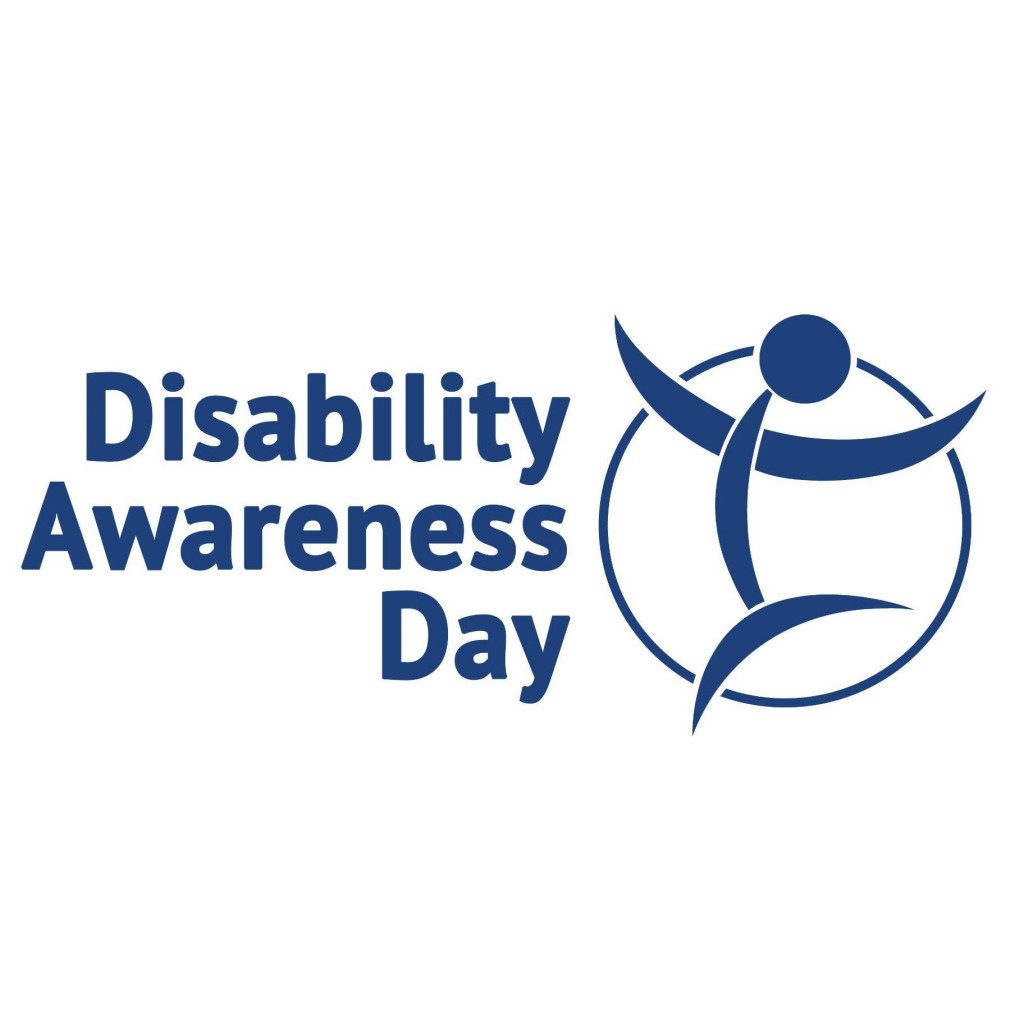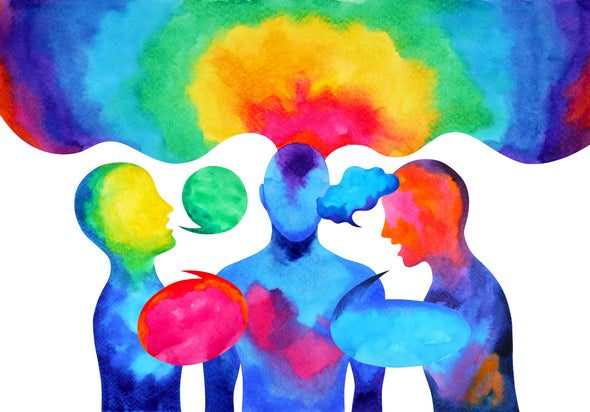Disability Awareness Day
Innovative Trials are passionate about ensuring our diverse population is adequately represented within medical research. Whether it is wanting to see more people from underrepresented communities choosing science as a career and pushing for greater patient diversity in clinical trials or focusing on what we are doing internally to celebrate and promote equality and diversity.
Throughout 2021, we have made a pledge to share our education and experiences with our clients and colleagues, to ensure inclusivity across the board. Each month we will be releasing communications in line with national and international awareness campaigns.
So far in our Awareness series, we have explored: Women’s Health; diversity in Cancer, Heart Disease and Scleroderma, Ovarian and Prostate Cancer, Autism Acceptance,Ramadan and Bowel Cancer, Stroke and Hepatitis, Mental Health, Pride month, Women with Alopecia, Psoriasis and Dementia.
We will be looking into disability as part of our second September Awareness blog.

Introduction
The Importance of Disability Awareness Day is to help with building awareness of persons with disabilities and taking notice of what daily life is like for them. While there has been much progress in adapting our environments to make them safe and easier to navigate through, there remain many areas where little consideration has been paid as to how a person with a disability would cope. Laws are in place in many countries around the world requiring that a particular standard is met in addressing the needs of people who have disabilities.
Disability Awareness
The aim of Disability Awareness is to help communicate the challenges faced by people with disabilities and develop the understanding, empathy and compassion of all regarding these difficulties. Disabilities can be physical and/or of the mind, and they might not always be visible, so it is important to have an open mind and not base our attitudes and responses to what we see. The aim of an awareness day is to work toward creating a world where everyone has equal opportunity in all areas of life. Persons with disability are valuable members of society and the day is about appreciating their part within it. (National Today, 2021)
This is a general list of disability types. It is by no means complete and exhaustive list:
- Autism – A developmental condition that affects how a person’s brain works. There is a spectrum of variance in how the condition affects those who have autism. Issues that arise can include problems with:
- Communication
- Thought
- Understanding others
- Sounds
- Movement
- Visual stimulation
- Being touched
- Social interactions and etiquette
- Dealing with changes (Morin, N/A)
- Communication Disorders – These include disabilities where a person is not able to speak or be able to understand others. Such conditions can be the result of natural causes or injury.
- Hearing Disabilities – Consisting of persons who are not able to hear particular sounds to being unable to hear any sound at all. In many cases, impairments result in certain sounds not being received clearly enough to be interpreted correctly. Hearing aids can make sounds louder, but cannot address unclear or muddled sounds.
- Learning Disabilities – This grouping consists of many different forms of disability that span from mild to very severe conditions. A person with such a disability can struggle against how their brain is processing information. This can affect how writing, speech and numbers are interpreted.
- Intellectual Disabilities – This classification signifies a condition that indicates a slower learning pace. Like other forms of disability, there is a considerable amount of variation in the possible severity of the condition. Issues that arise can include problems with:
- Understanding others
- Communicating their feelings
- Understanding body language/signals, social boundaries, verbal communication
- Learning and concentration
- Behaving in an age-appropriate way
- Reading and writing
- Distinguishing between what is right and wrong
- Physical Disabilities – A very large number of conditions fall within this category, ranging from mild movement issues to being completely immobile. Such conditions can be the result of natural causes and/or injury, with it being possible for a person to have multiple disabilities.
- Visual Disabilities – Consisting of disabilities ranging from short/near-sightedness to a complete lack of vision. While the milder forms can be manageable with equipment such as glasses, the more severe forms can affect a person’s ability to read or walk. Coping with such forms can require learning an alternative way of reading (Braille) or walking (with the aid of a cane or a guide dog). (Adcock, 2006)
Appropriate Language

A significant step in creating an accessible and welcoming environment is using language that focuses on the person, rather than the disability. Making a disability the defining characteristic for anyone is a mistake that must be avoided. In many instances, attention should be paid to avoid associating negative language with a disability:
- ‘Need’ not ‘Problem’
- ‘Accessible’ or ‘Disabled’ not ‘Handicapped’, ‘the disabled’, ‘cripple’, ‘invalid’
- Refer directly to the condition, not using ‘afflicted by’, ‘suffers from’, ‘victim of’
- Referring to people without disabilities as ‘Normal’, ‘Able-bodied’
- Using insensitive terms that may have been previously used to describe such conditions.
- Language and culture amongst people with disabilities may result in terms being developed/used that are solely for the use within particular communities and should not be used by people without disabilities.
- ‘User’ rather than ‘Bound’ (Wheelchair-bound)
Appropriate Interaction
Avoid treating a person with a disability as:
- Being special or having special abilities resulting from their condition.
- Being dependent on others or as someone deserving pity.
- Being incapable of coping without help.
Helpful Tips:
- It is easy to make a mistake in your interactions around people with disabilities. Do not be afraid, but be honest with your considerations. Remember, there will be individual choices and opinions that you may need to understand.
- Always be respectful and avoid allowing patronising language or terms into your communication. Speak the way you would with any other person.
- Speak directly to people with disabilities where appropriate, rather than ignoring them and speaking to others that they may have accompanying them.
- For persons with physical disabilities:
- Do not assume a person’s capability.
- Respect personal space and do not handle any personal items without a person’s approval or request.
- Never initiate assistance without asking if your help is required.
- Where appropriate, try to ensure that any significant time spent around people with disabilities is done so at the same eye-level.
- Do not pretend that you understand a person who has difficulty with communication. Make it clear that you do not understand or ask for the person to repeat their statement.
- For people with visual disabilities:
- Announce your presence and any others to them and be careful in how you handle physical contact. A gentle touch may be appropriate to get their attention, but anything else should be avoided unless specifically requested.
- The same care needs to be taken when leaving the presence of a person with a visual disability. Do not leave them standing alone in an empty space without their knowledge.
- Speak directly to the person and allow them to respond with the time that they need. Without visual cues to help understand that they may speak, pauses may need to be longer.
- Use your normal speaking volume, unless directed otherwise. Avoid using hand gestures or signals in your conversation.
- Do not engage with a service dog unless you have permission from the owner.
- For persons with hearing disabilities:
- Where possible, ask what is their preferred form of communication.
- Respectfully and calmly gain a person’s attention with a wave or a gentle touch before beginning such communication.
- Avoid exaggerating your expressions or words and do not raise the volume of your speech unless requested to do so.
- Engage people with disabilities in a conversation, rather than speaking to them for long periods without them being able to interject.
- Use clear language that is difficult to misinterpret. If a person is going to be lip-reading, avoid raising your hand in front of your face.
- If using text to communicate, do not speak, also. Allow a person the time to read and understand your message(s).
- Again, do not pretend that you understand a person, when you have not. Ask for the person to repeat their statement or try an alternative form of communication.
- For persons with cognitive (autism, intellectual, learning) disabilities:
- Treat adults as adults, irrespective of any disabilities that they may have.
- Be alert to any signals and body language that appear while in conversation. It may be that you need to adjust your approach to make them more comfortable.
- Use direct and plain language and avoid abstract or specialised expressions to make your points.
- Depending on the conditions that a person has, additional time may be necessary to engage or inform them. Consider the environment you are in and whether it would be helpful to take the conversation to a more suitable location.
- Be patient, sensitive and respectful. (Art Beyond Sight, N/A)
Conclusion
Disability awareness has come a long way in recent years. From adapting how we speak of the different types of disability, how we interact with those that have them and working towards making environments safe and inclusive for all. This is not to say that we, as a community, do not have further improvements to make. The terminology used in discussing this subject remains a work in progress and it is likely that the ways in which we discuss the subject will differ greatly. Neurodiversity sees the way that people’s brains function as being different, rather than some as having a disability. Also, considerations for people with disabilities vary depending on where in the world they are, so there remains much work to do to increase awareness. There are ongoing examples of people with disabilities experiencing difficulties with how they are treated (Laversuch, 2021)and there are also worrying trends (BBC News, 2021) in some places that stress how important it is to improve levels of understanding.
Additional Note
The approach to terminology and referencing of people with disabilities can vary between communities and then further depending on the region. The following blog has been written with sensitivity and attention to what the correct terminology is for the conditions being addressed. The UK Government website (Gov.uk, 2021) has been used as a guide and it is understood that language is constantly evolving and the terms used may one day be considered unacceptable. If any part of the following is upsetting in any way, we apologise and would welcome your feedback regarding the correct way to address that subject.
References
- Adcock, B. (2006). Disability Awareness Activity Packet. Possibilities, Inc. https://www.dvusd.org/cms/lib011/AZ01901092/Centricity/Domain/1318/Disability%20Awareness%20Packet%202.pdf
- Art Beyond Sight. (N/A, N/A N/A). Disability Awareness Training. Art Beyond Sight. Retrieved September 10, 2021, from http://www.artbeyondsight.org/handbook/dat-accessibility-skills.shtml
- BBC News. (2021, June 11). Disability hate crimes in Scotland see largest rise again. BBC News. Retrieved September 10, 2021, from https://www.bbc.co.uk/news/uk-scotland-57442364
- Gov.uk. (2021, March 15). Inclusive language: words to use and avoid when writing about disability. Gov.uk. Retrieved September 10, 2021, from https://www.gov.uk/government/publications/inclusive-communication/inclusive-language-words-to-use-and-avoid-when-writing-about-disability
- Laversuch, C. (2021, June 23). Outrage as York council set to make ban on blue badge holders driving in the centre permanent. Examiner Live. Retrieved September 10, 2021, from https://www.examinerlive.co.uk/news/local-news/outrage-york-council-set-make-20882134
- Morin, A. (N/A, N/A N/A). What is neurodiversity? Understood. Retrieved September 10, 2021, from https://www.understood.org/articles/en/neurodiversity-what-you-need-to-know
- National Today. (2021). International Day of Persons with Disabilities. National Today. Retrieved September 10, 2021, from https://nationaltoday.com/international-day-of-persons-with-disabilities/
Equality, Diversity and Inclusion continues to be high on our agenda. We are working behind the scenes to push this forward. Keep your eyes peeled for more.
Find out how we’re working with clients to ensure greater patient diversity in clinical trials.
